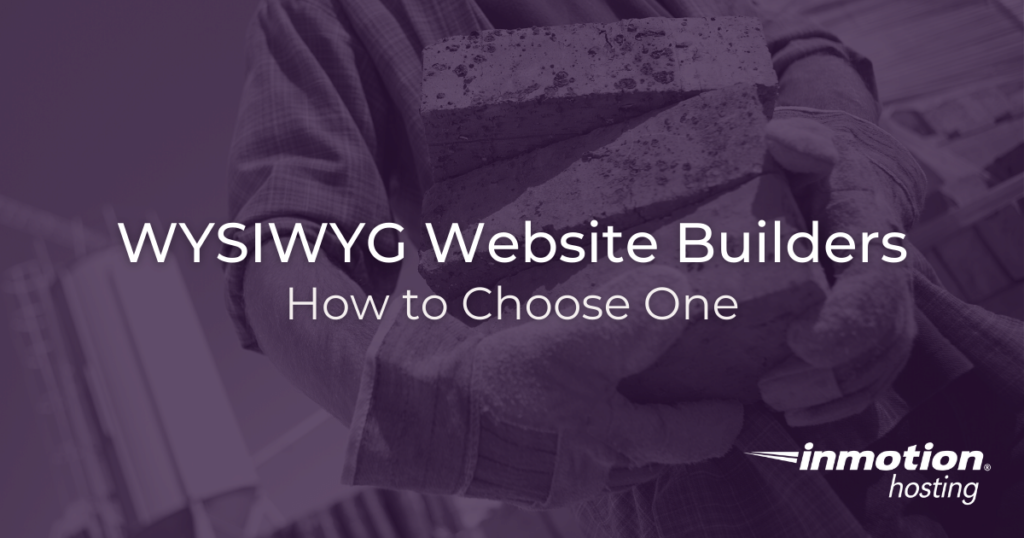
Choosing a What-You-See-Is-What-You-Get (WYSIWYG, pronouned “wizzy-wig”) website builder is a personal choice. Much of the process is based on personal tastes and preferences. And yet, there are some logical processes you can run through in the cost/benefit analysis that might help inform your preferences. This article attempts to answer the question, “How do you choose a WSIWYG website builder?”
Different Styles of WYSIWYG Website Builders
There are many different kinds of WYSIWYG website builders from which to choose. Some of the most popular ones are built as plugins for the highly popular WordPress content management system (CMS). The benefit of taking this plugin approach is that you can manage your own self-hosted WordPress installation and still take advantage of an integreated drag-and-drop WYSIWYG website builder. This maximizes your control over your own content.
Costs
Many of the premium hosted services can come at a greater cost, because much of the configuration on the back end is done for you. Which means you can focus solely on design without putting much effort into the system configuration side of your website. But with cPanel, and many hosting services being integrated into a single package, you can do just as well — or better — with a self-hosted WordPress hosting package. This maximizes your control while saving you spending too much time hacking your system for better performance.
Content Production
Much of your decision-making about picking a builder will come down to how often you are pushing out new content. Designing pages for your site and writing long form posts do not always go together. Some builders change the default styles in your editor, and even add additional buttons and features. For some writers, this can be distracting.
But, if you are design static pages for a site, and the content will not change often, the appearance of the editor — and the tools available — should not pose a major distraction. There has not yet appeared a page builder that is geared toward writers or long form content producers. This is why most written content is composed outside of the builder plugin and copied and pasted in later.
Image Storage and Optimization
Finding the most efficient storage and optimization for your images can you save loads of time and energy, and help your website find better rankings in search engines. A big part of this issues comes down to the VPS vs dedicated hosting question, but in both of those types of hosting you have the most options. Likewise, there are fine-tuned hosting plans designed to best optimize certain content managements systems like VPS WordPress hosting.
Speed is a very important factor in the ultimate success of your website. And much of that speed comes from properly optimizing images and other media. This might seem like it comes to a pure question of hosting. In many ways this is a hosting question rather than a page builder question. But the two are linked.
If you use hosted service like Wix or WordPress.com they will handle all of your image processing, which means much of the configuration has been done for you, and you are provided this service alongside the web builder itself. The down side is that these services can have high costs associated with them, when much of what you can do with image optimization is free. You can optimize your page content without paying any extra fees. You only have to utilize a few free tools, and some basic idea of what you are doing.